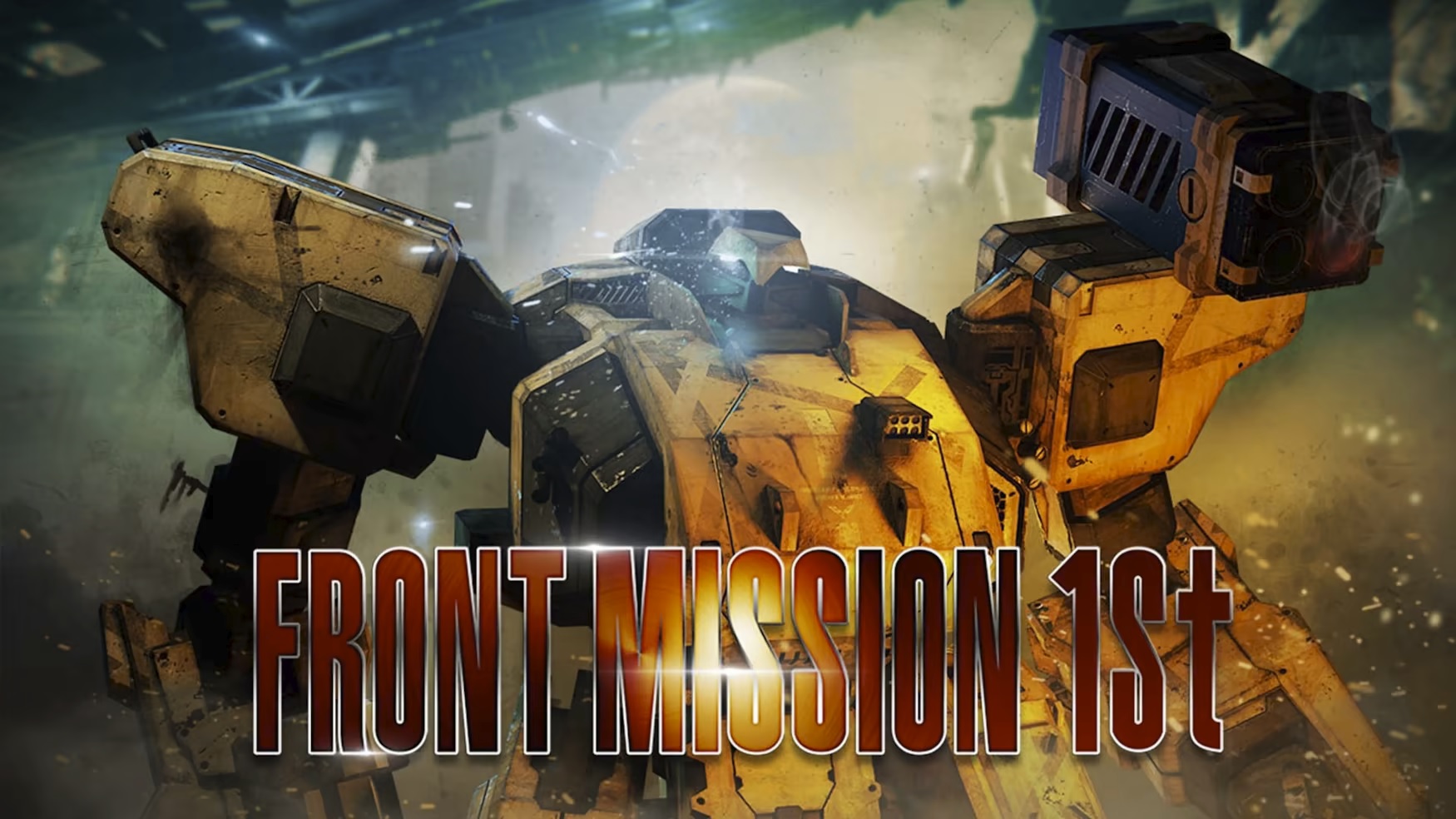Prior to the new Front Mission 1st remake, the original Front Mission started it all as a Japanese cult classic strategy RPG. It came from Squaresoft’s producer Hironobu Sakaguchi’s love of mecha model building and kit-bashing. This was going to be a new kind of RPG that Square had never made before. Instead of magical crystals and dragons, Front Mission would be about political intrigue and large mecha.
With Kow Yokoyama (Venus Wars, Bubblegum Crisis) on staff as mech designer and Toshiro Tsuchida of Langrisser fame on game design duties; it is no surprise why Front Mission became a Super Famicom classic. Sadly, it never left Japan’s shores, and only through fan translations could gamers experience it until it got a Nintendo DS port in 2007.
Now that Forever Entertainment has remakes of House of the Dead and Panzer Dragoon, they have set their sights on the first three Front Mission games. With all new 3D visuals and quality-of-life improvements, how does this remake fare for newcomers and fans? Find out in this Front Mission 1st review!
Front Mission 1st
Developer: Forever Entertainment
Publisher: Forever Entertainment, Square Enix
Platforms: Super Famicom (as Front Mission), PlayStation, WonderSwan Color (as Front Mission), Nintendo DS (as Front Mission), Nintendo Switch
Release Date: November 30, 2022, October 23, 2007 (DS), October 23, 2003 (PlayStation), July 12, 2002 (WonderSwan Color), February 24, 1995 (Super Famicom)
Players: 1
Price: $34.99 USD

The story in Front Mission 1st was very mature for its day. It depicts a NatGeo political conflict in the 2090s, where several superpowers leave the U.N. in hopes of claiming Huffman Island; a new island formed by a volcanic eruption.
Oceania Cooperative Unit (OCU) is made up of Japan, Australia, New Zealand, Korea, and many other smaller nations in the Pacific. The opposition is the United States of the New Continent (USN) was formed as a response to the OCU and was quick to establish territories in and around Huffman Island in the 2020s, but tensions have been high since.
Due to Huffman Island’s volcanic creation, it is rich in minerals and valuable resources, which makes it a prime target for the power elite to seize control. At the heart of this long conflict are the soldiers who are sent to defend and conquer Huffman. Front Mission 1st‘s story revolves around these souls on both sides.
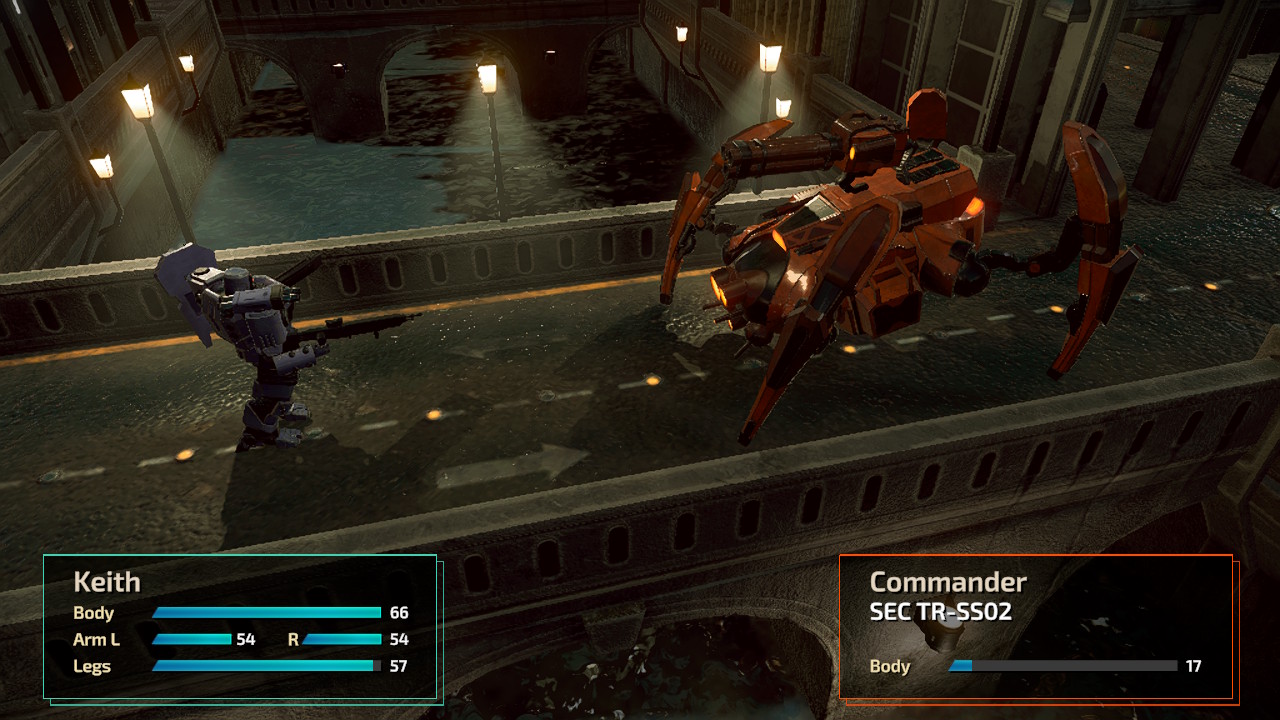
Front Mission 1st has two scenarios that follow either OCU or USN and both come with their own protagonist. As OCU, players assume the role of Royd Clive and take on his quest for revenge against the unit that caused the death of the love of his life during a Wanzer exercise.
Royd is a very interesting character. He is utterly bloodthirsty and is a natural mercenary. He is rarely phased by anything and his self-destructive attitude ultimately became his greatest strength on the field of battle. Royd almost feels like a character from a Metal Gear Solid game with how he is written.
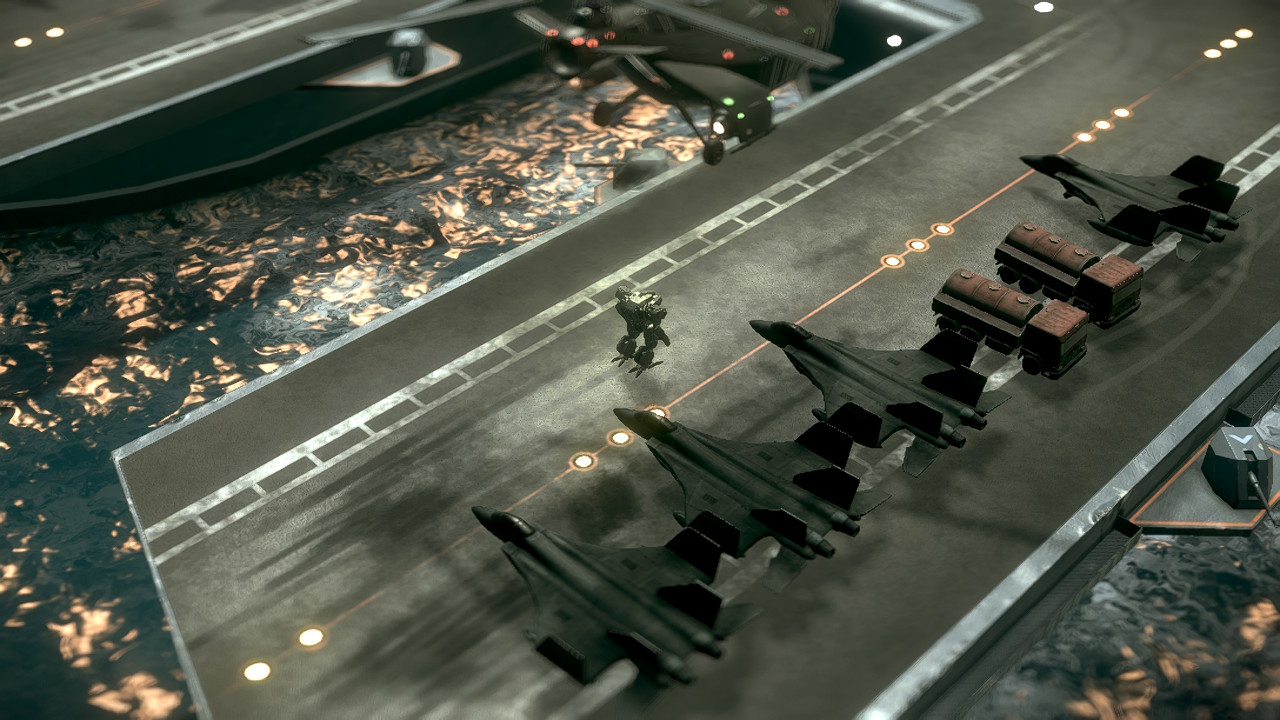
The only issue with the writing is that it is apparent that this was headed by a team where English was not their first language.
Some of the dialogue flows really poorly and there are some questionable word choices that make the text read like it was translated from Japanese to Polish to English. This is probably because developer Forever Entertainment is based in Poland.
His descent from war hero to war criminal shows just how battle can change a man. The disposability of soldiers is a theme that carries on into the USN scenario where players assume the role of Kevin Greenfield, a special forces Wanzer pilot.
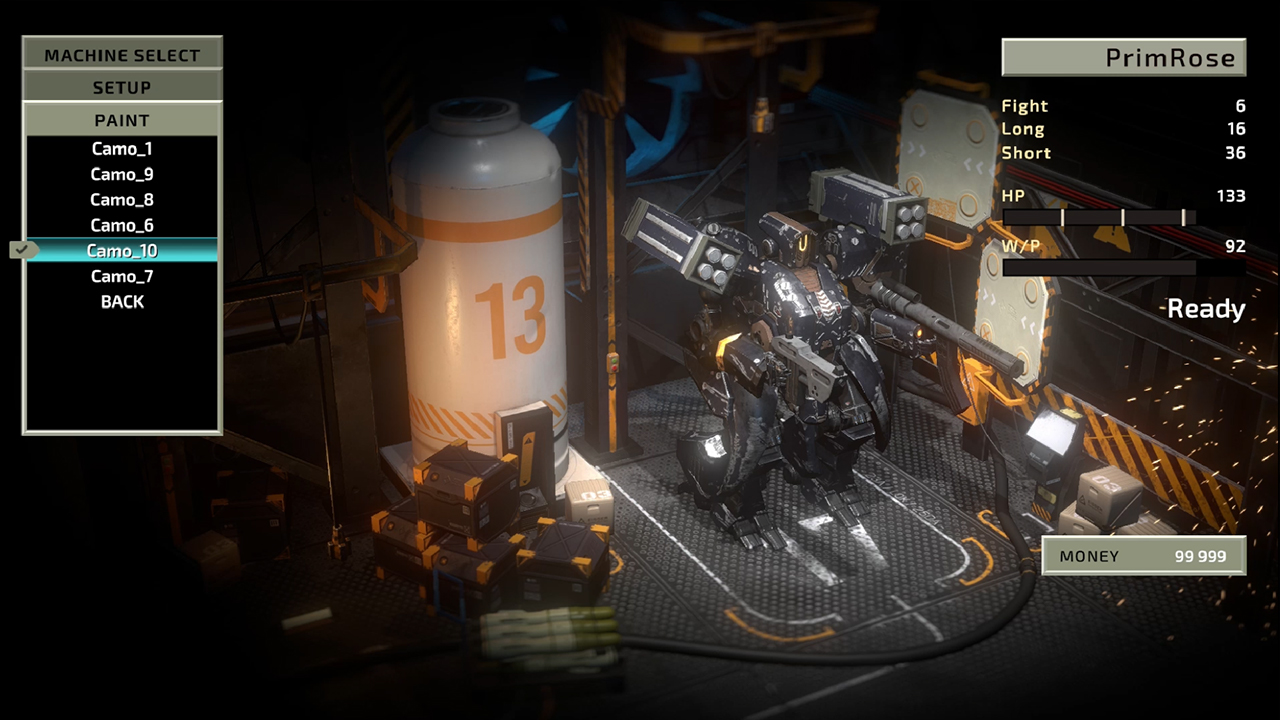
Kevin’s scenario does not get as much character development as Royd’s, but it is a lot harder. Since Kevin is more like a secret operative who does the USN’s dirty work, his campaign is a borderline suicide mission where the odds are stacked against the player at every turn.
Front Mission 1st is based on a strategy RPG from the mid-90s and that comes with a lot of good and some bad. There is a complete disregard for streamlining the gameplay and in this game’s case, the amount of customization and tinkering afforded is seemingly endless.
Compounded with the nigh-infinite variables to consider when on the field, each mission is pregnant with possibilities for things to go wrong. There is a strong randomization factor too.
The core pillar of Front Mission 1st is each Wanzer has destructible limbs and a core. The key to defeating enemy Wanzers is to destroy their core for a quick win or gradually dismember them to slowly overtake the field.
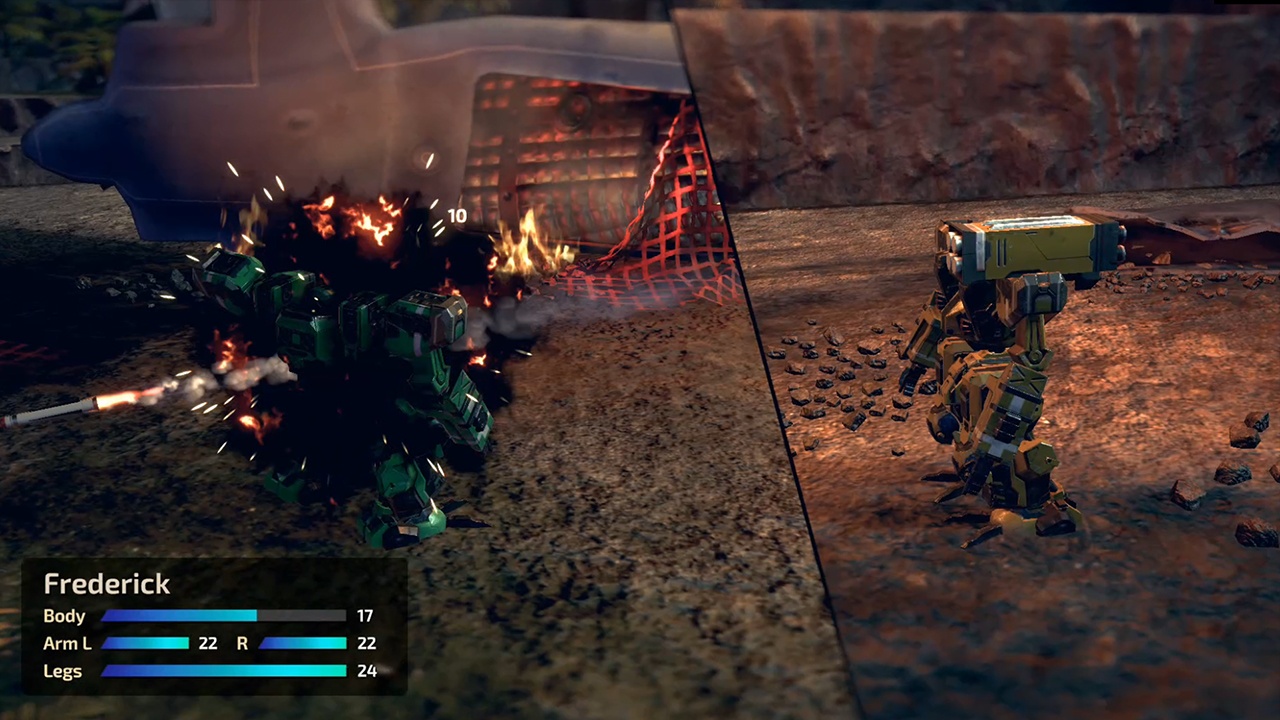
Players can’t individually target specific points on an enemy. The key to victory in Front Mission 1st is in preparation and carefully specializing in builds when constructing the party’s Wanzer loadouts.
Once you are accustomed to the esoteric symbols and icons to understand what everything means, everything becomes a matter of learning to control the chaos in the numbers and stats.
Making each unit lean into a specific field to stack the odds in the favor of an attack type is the efficient means to blow a hole in the chest of the enemy’s mech. The downside is that specialized units are more vulnerable and are only effective in certain situations.
Playing with more generalized builds is much safer, but also can drag battles out to a point where they become tedious. Ranged strikes are also limited and can miss more than they should.
However, there is satisfaction to be had when an enemy is crippled with no way to attack and is stuck far away from the battle.
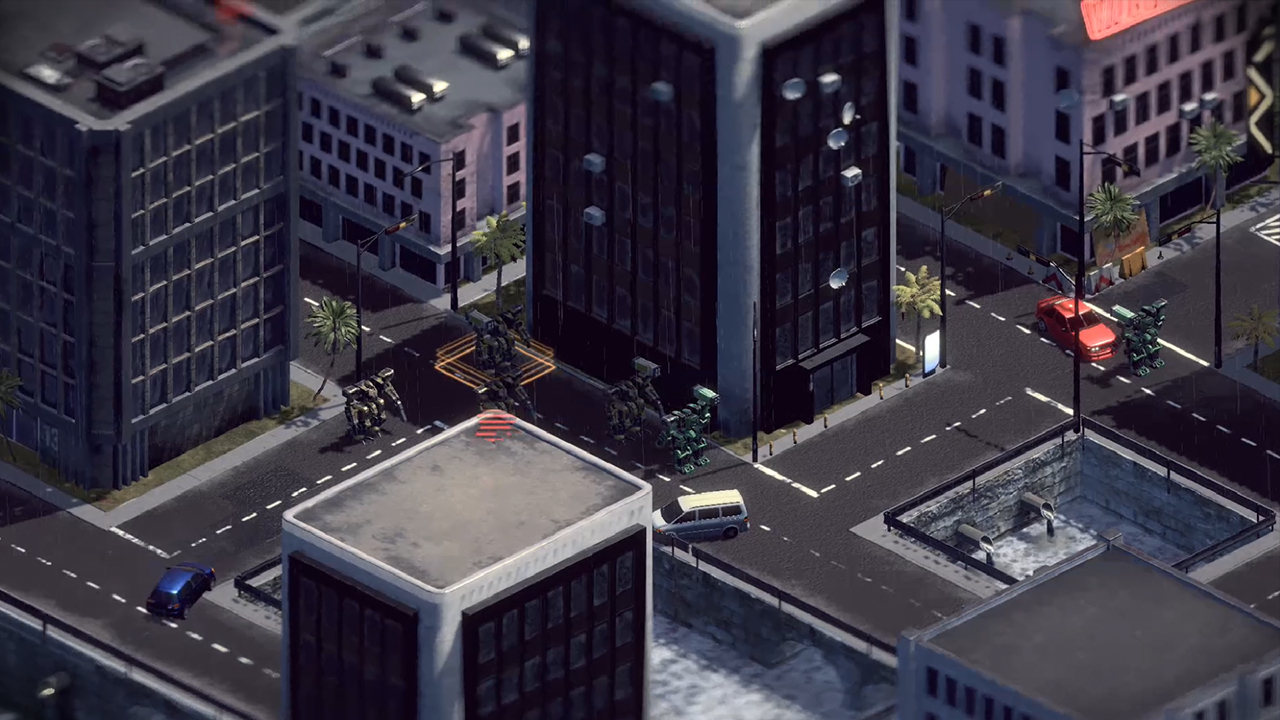
Some of the new features in Front Mission 1st are the camera controls, which help give a better view of the battlefield. The original game was 2D and was stuck in an isometric POV and this remake does include a mode that locks the camera to that classic angle, but there is no going back when you can get so much control over the field.
The original mode also has each Wanzer very slowly and realistically waddle to their selected points on the map. It’s a cute novelty, but there is no going back after feeling how much quicker the pace can be in “modern mode”. The modernizations merely make the mechs dash to their marks instead of tediously walking.
The customization for building the Wanzers is extensive, but nowhere near as complex as it would get in later games. This is where the kit-bashing inspiration truly comes into play, where players can mix and match parts and specialize in statistics.
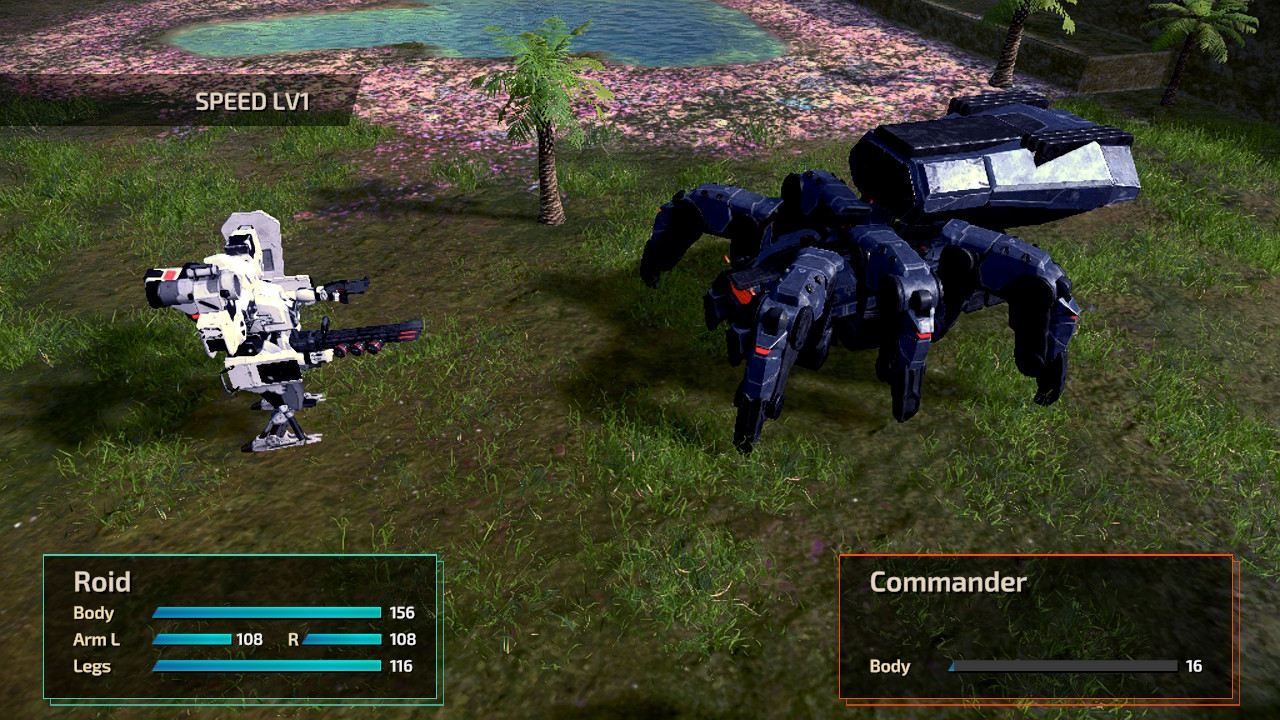
The original Front Mission wasn’t anything special to look at on the Super Famicom, but it did have a distinct feel to its visuals and made use of rugged pixel art and scanned imagery.
Character portraits are redrawn and try to emulate Yoshitaka Amano’s style, and for the most part, they succeed with a few awkward examples that look like something out of Hotline Miami. Front Mission 1st’s new visuals are made in Unity and take on some seventh gen console aesthetics.
The environments have a plastic-like quality, which is fitting considering the inspiration behind the game is model kits. Grass and dirt look like it’s been polished to a shiny sheen. The depth of field effect is also very aggressive and makes everything look miniature.
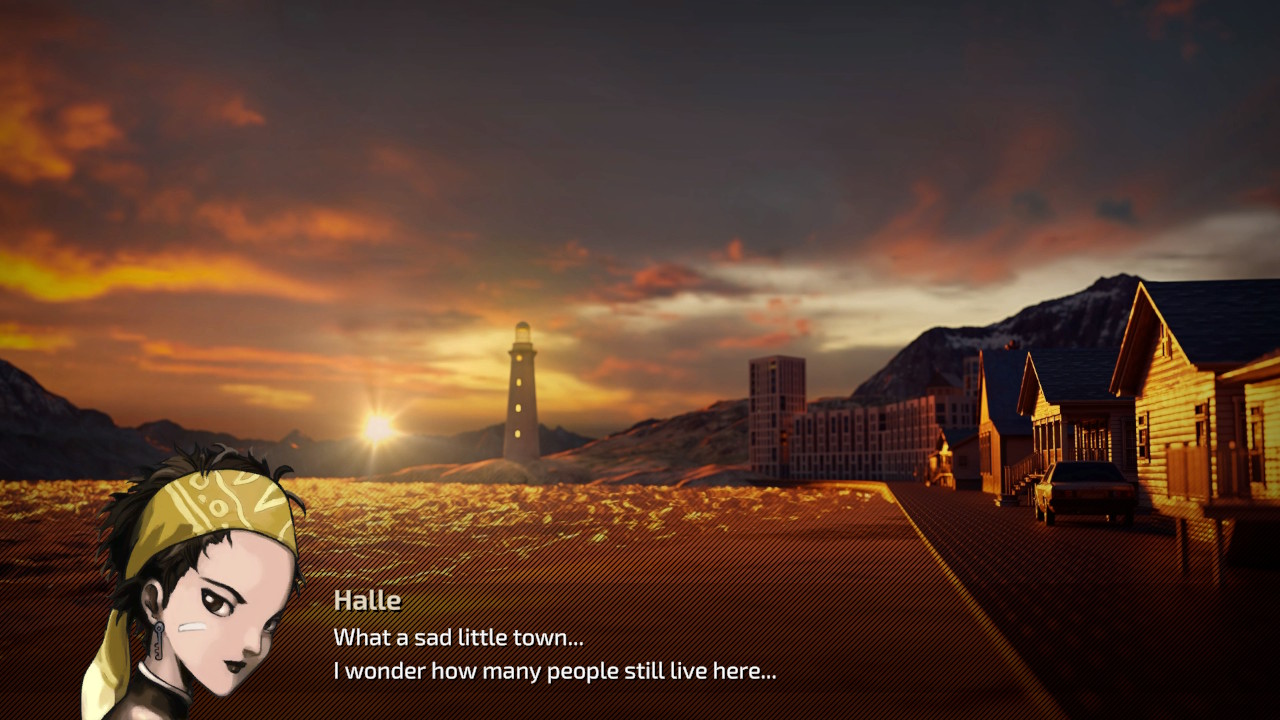
Like its progenitor, Front Mission 1st is an acquired taste, but even the most hardcore strategy RPG maniacs may find the technicalities of the gameplay exhausting. Every piece of your Wanzers demand consideration and money can run dry very quickly which can lead to hours of grinding in order to be prepared for the coming battles.
Even with the QOL features like animation skipping, battles in Front Mission 1st can last around 30 minutes or more. Some gamers may find it tedious, but there is a zen-like quality to gradually and slowly turn the tide by whittling down the enemy. The flow of the battles still feels like they are rooted in 16-bit territory and fans of the original will surely appreciate the effort.
Forever Entertainment has proven they are effective at remaking old titles with new visuals while keeping the gameplay as faithful as possible. While Front Mission 1st is a worthy alternative to the old version, maybe an HD-2D reimagining with snappier battles would have been better. Time will tell how their efforts will pay off on the more ambitious upcoming entries in the Front Mission series.
Front Mission 1st was reviewed on Nintendo Switch using a copy provided by Forever Entertainment. You can find additional information about Niche Gamer’s review/ethics policy here. Front Mission 1st is now available for Nintendo Switch.
